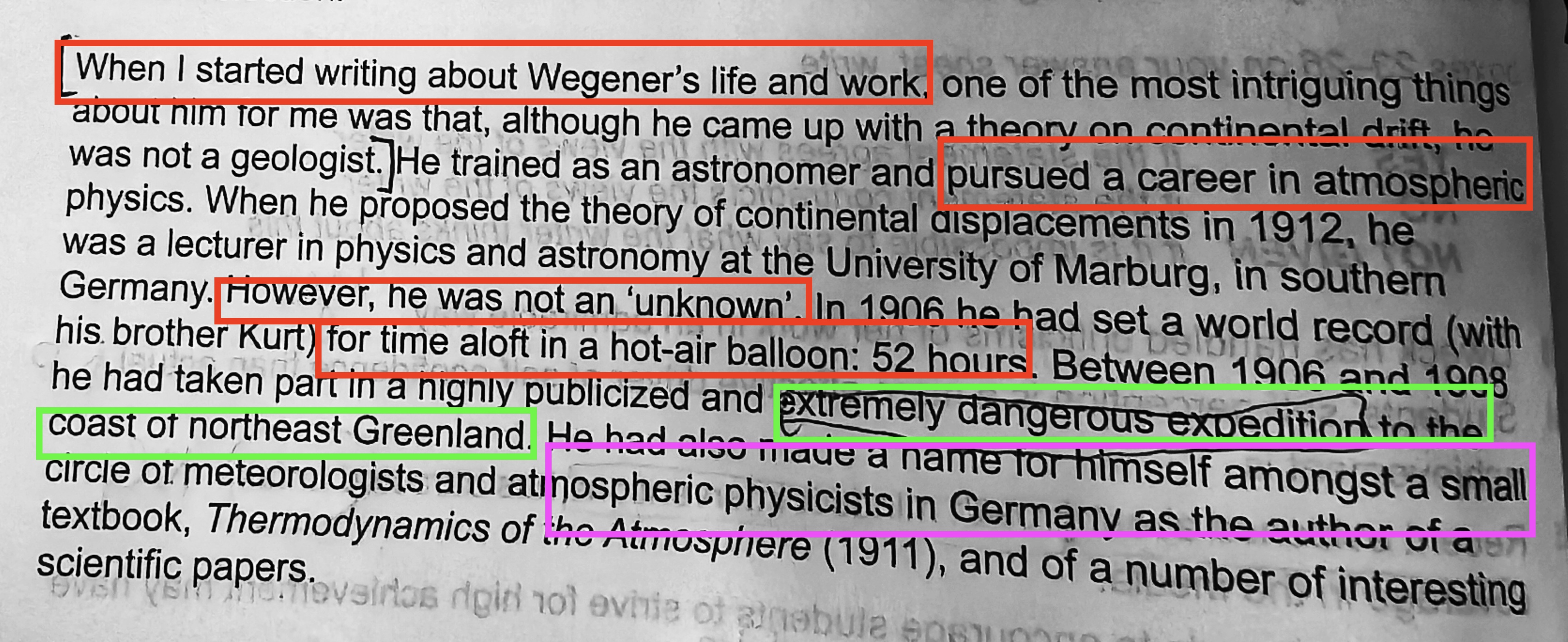Yes, No, Not Given questions
Questions 27-30

Let’s look at the format. It’s all paraphrases that needs to be checked in the essay so it’s very time consuming. Let’s skip this.
The answers from 27-30 is the main-thesis, and all of paragraph 2.
We start off with the hook (1st sentence), and then we have the thesis (last sentence). And the answer for Question 27 is the last sentence. But nevertheless, I find that its better to really read through the sentences.
27. Wegener’s ideas about continental drift were widely disputed while he was alive.
The answer is found in the main thesis of the introduction:
The Origin and Continents and Oceans, went through four editions and was the focus of an international controversy in his lifetime and for some years after death.
Answer – Yes
Paragraph 1
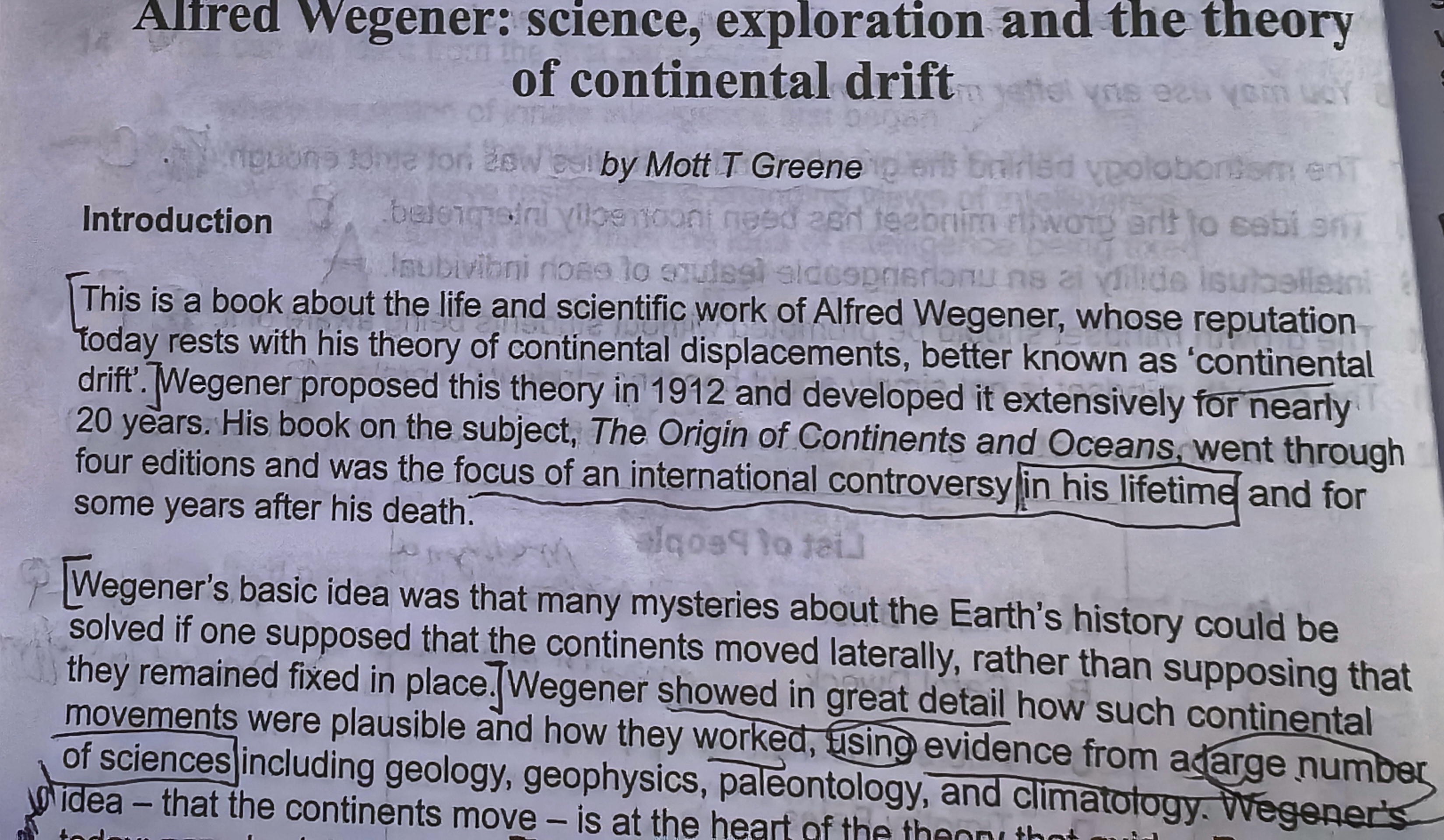
28. The idea that the continents remained fixed in place was defended in a number of respected scientific publications.
Nowhere does it say continent remained fixed in place was defended. Paragraph 2 talks how about how mysteries about Earth’s history could be solved IF THEY ASSUMED that continents moved. He used a large amounts of evidence from other sciences. But never did it mention anything about scientific publications defending fixed placed continents.
Answer – Not Given
29. Wegener relied on a limited range of scientific fields to support his theory of continental drift.
Wegener did rely on scientific fields, but they were not limited. The article says using evidence from a large number of sciences
Answer – No
Paragraph 2
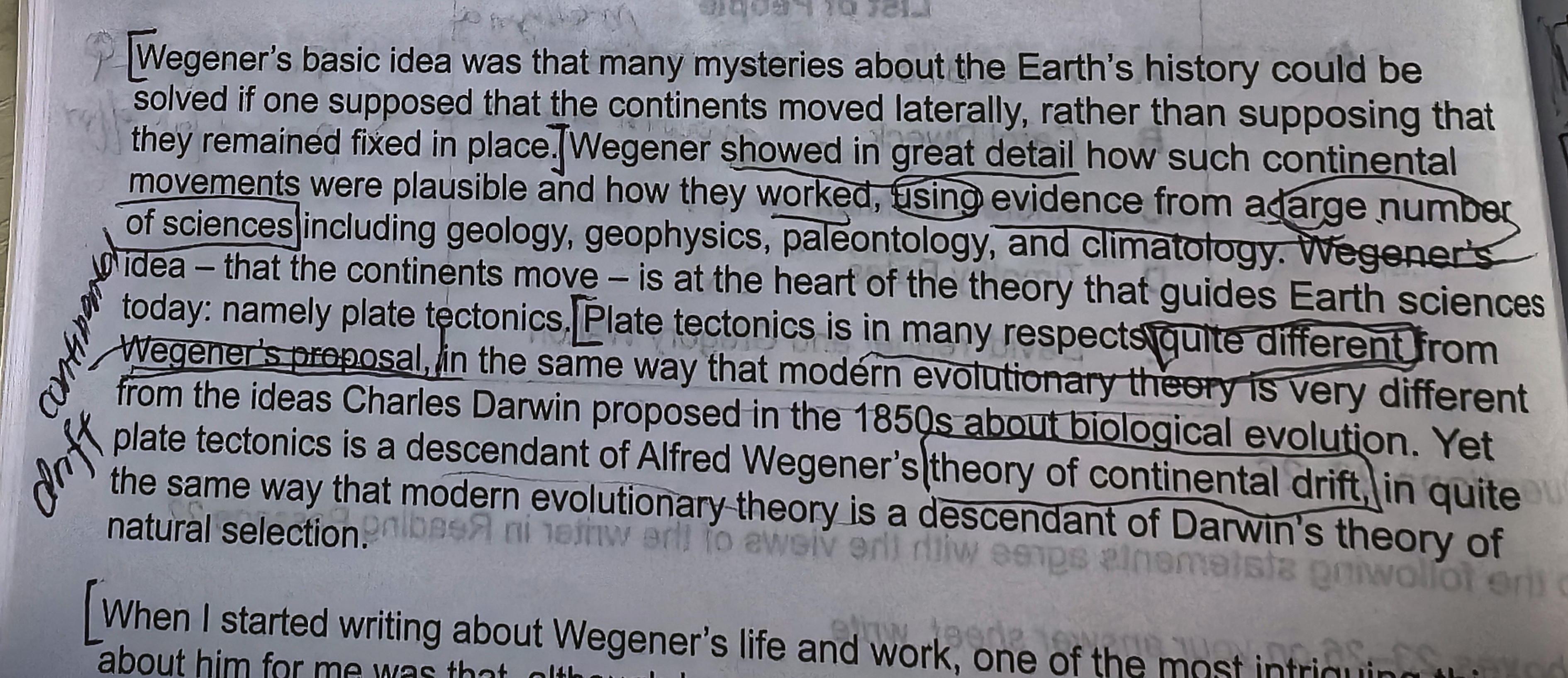
30. The similarities between Egener’s theory of continental drift and modern-day plate tectonics are enormous.
Now in Paragraph 2, we keep reading and come to this line:
“Plate tectonics is in many respects quite different from Wegener’s proposal”.
But what is Wegener’s proposal?
In the first paragraph we see his “theory” is ‘continental drift’, thus:
“Plate tectonics is different from continental drift (Egener’s)”
So this is in stark contrast to where the problem claims there are many similarities.
Answer – No
Thus, we conclude Questions 27 to 30
Fill in the blank
This is the second hardest because even though the answer sentences are all in one paragraph, we’re just not sure WHICH paragraph. Let’s leave this for the middle.
The answers is Paragraph 3.
When you move to the next section in your answer, make sure you move along the paragraph too.
Read the paragraph line by line and honestly. You notice that the author is writing about Wegner, thus its an autobiography.
“When i started writing about Wegener’s life and work….”
Therefore 31 is I
Paragraph 3
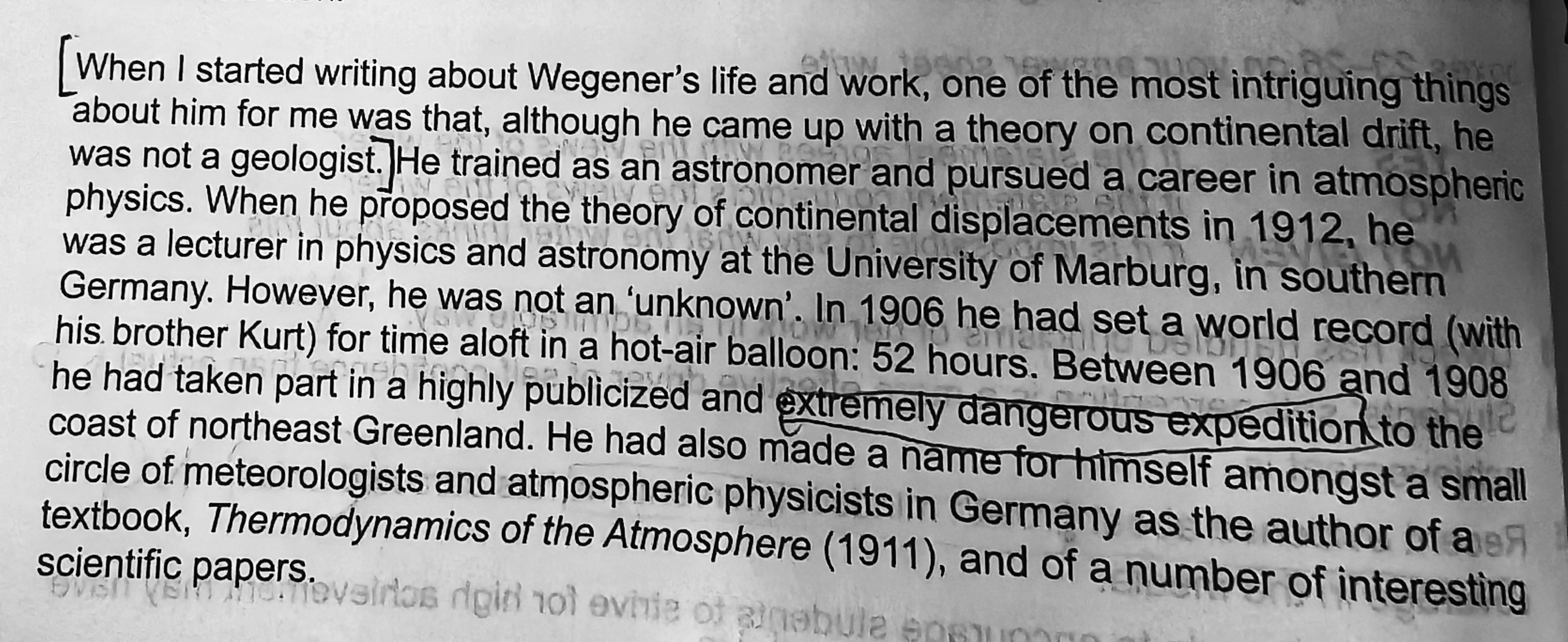
32 something about atmospheric physics. So we read on.
“He trained as an astronomer and pursued a career in atmospheric physics.
Now career is a profession “His ________ 32 __________ were limited to atmospheric physics”….we’re trying to find a synonym of career. And we feel F “professional interests” fits best.
Therefore 32 is F
There’s a lot of paraphrasing and synonyms going on, so be mindful.
For example, “However, he was not an ‘unknown’. ” This just means that even though he is not famous, he is still know. And the article continues to list what made him quai-famous. For example, “In 1906 he had set a world record for time aloft…etc”
33. Therefor He was already a person of (modest fame). So A is the answer.
34. Naturally the next sentence talks about his 52 hours in a hot-air balloon, which was mentioned as a record breaker. So, C is the answer.
After the hot air balloon sentence, it says “Between 1906 and 1908 he had taken part in a highly publicized and extremeley dangerous expedition to coast of Greenland.
By paraphrasing, we see that the answer is “followed by his well-publicized but hazardous exploration of Greenland’s coast.
35. so H is the answer
Finally for 36, we continue with the sentence.
He had also made a name for himself amongst a small circle of meteorologists and atmospheric physicists in Germany …etc
So he had also come to the attention of a ‘select group’ of German scientists.
36, answer is E
Question 31-36
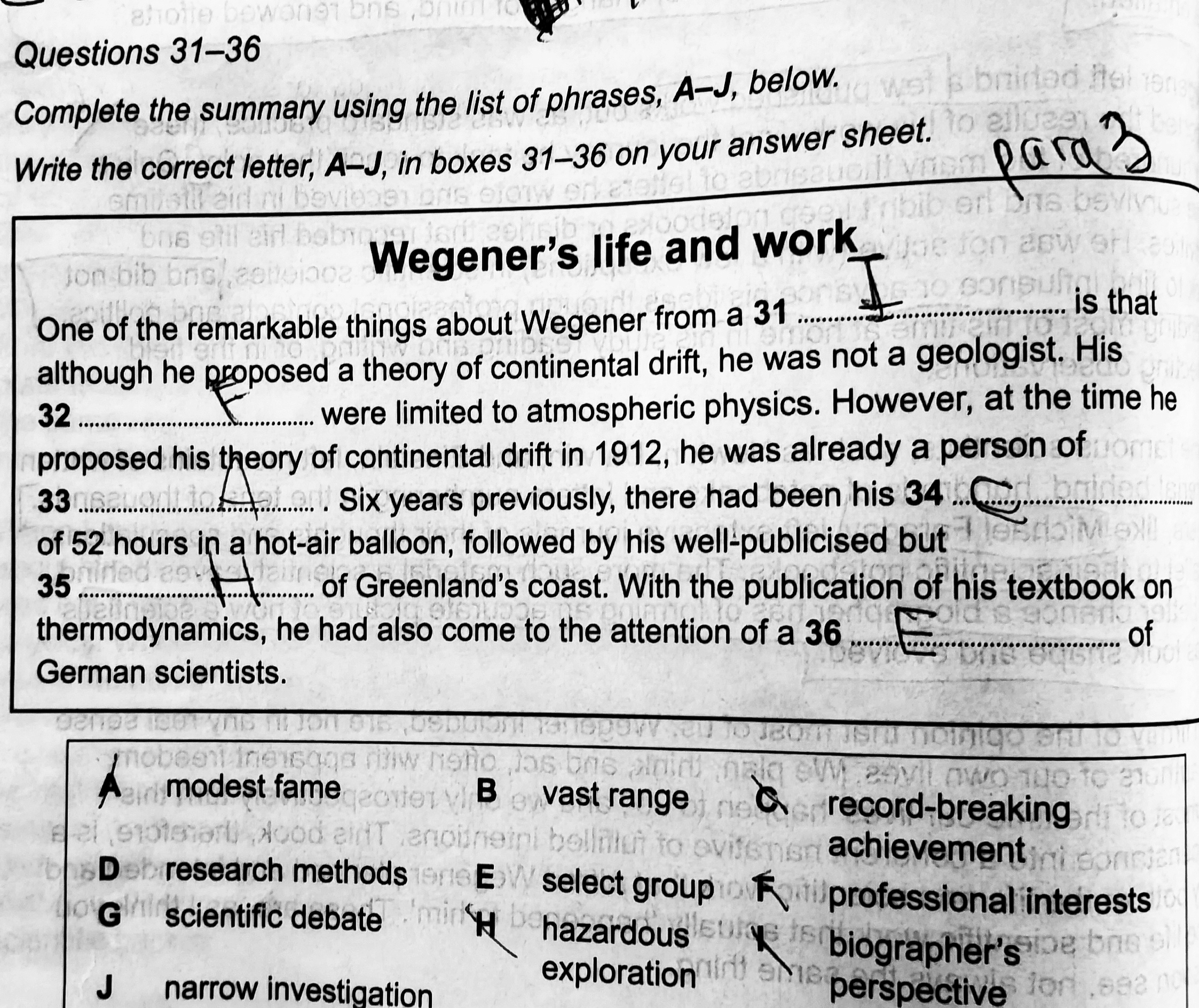
Multiple Choice Tip
The questions in this section tells you exactly which paragraph to read. So do this part first.
Let’s look at 37-40. These are multiple choice questions where it asks you what’s someone’s main point? Or in paragrah n, what is who doing…etc.
The answers are either last line (sum up) of paragraph, or the first line (mini-thesis). However, you should nevertheless read the WHOLE PARAGRAPH for context and understand the jist of its saying.

If you take a look at the answer, we notice that much of them are the last line of the paragraph. Only #40 is the first line of the conclusion.
Thus, as we know, the first line are the main point (or mini-thesis) of each paragraph.
The last line wraps up or supports
Answer on Sentences
Introduction (paragraph 1) – yes, no, not given
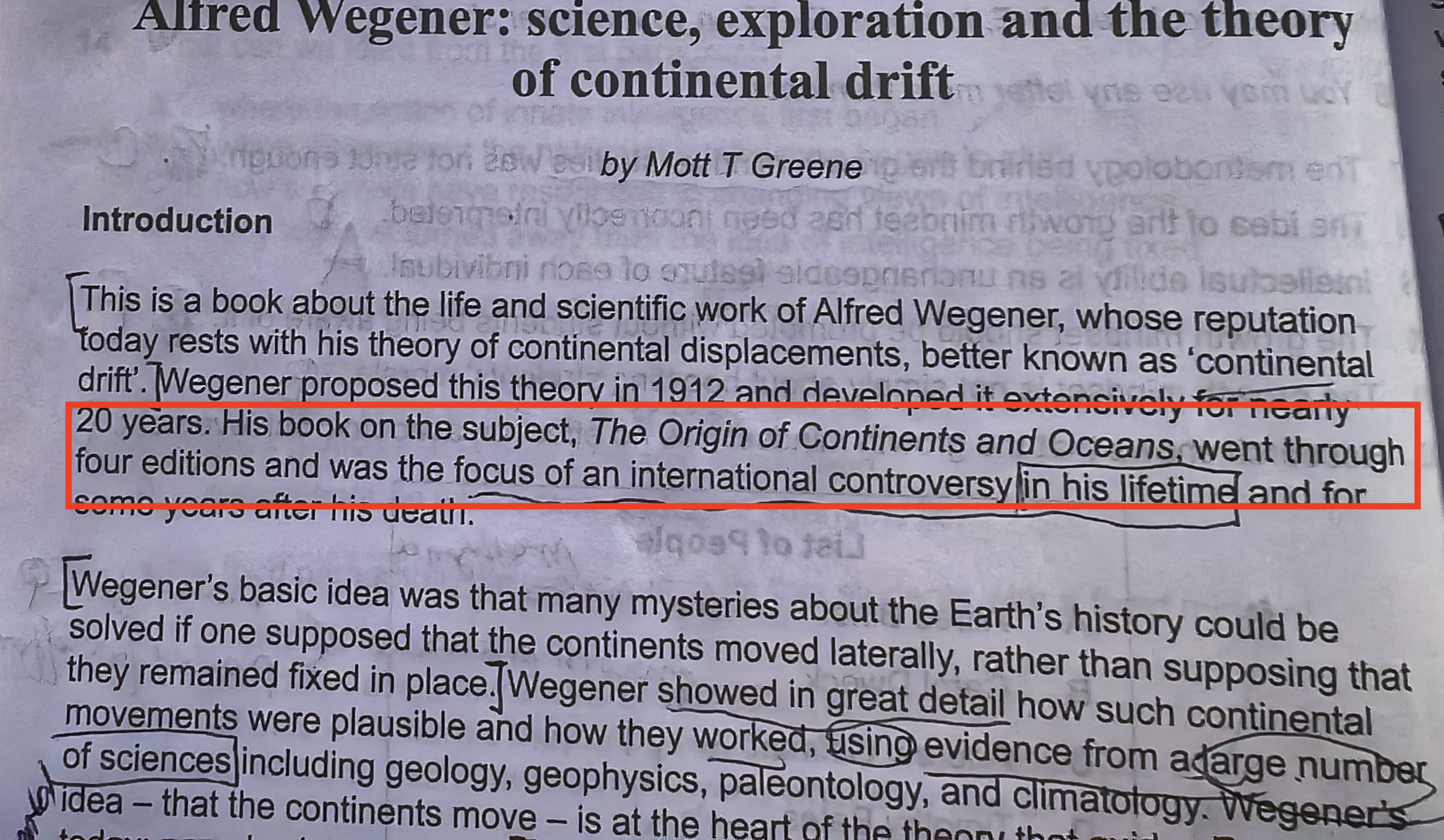
(Paragraph 2) – yes, no, not given
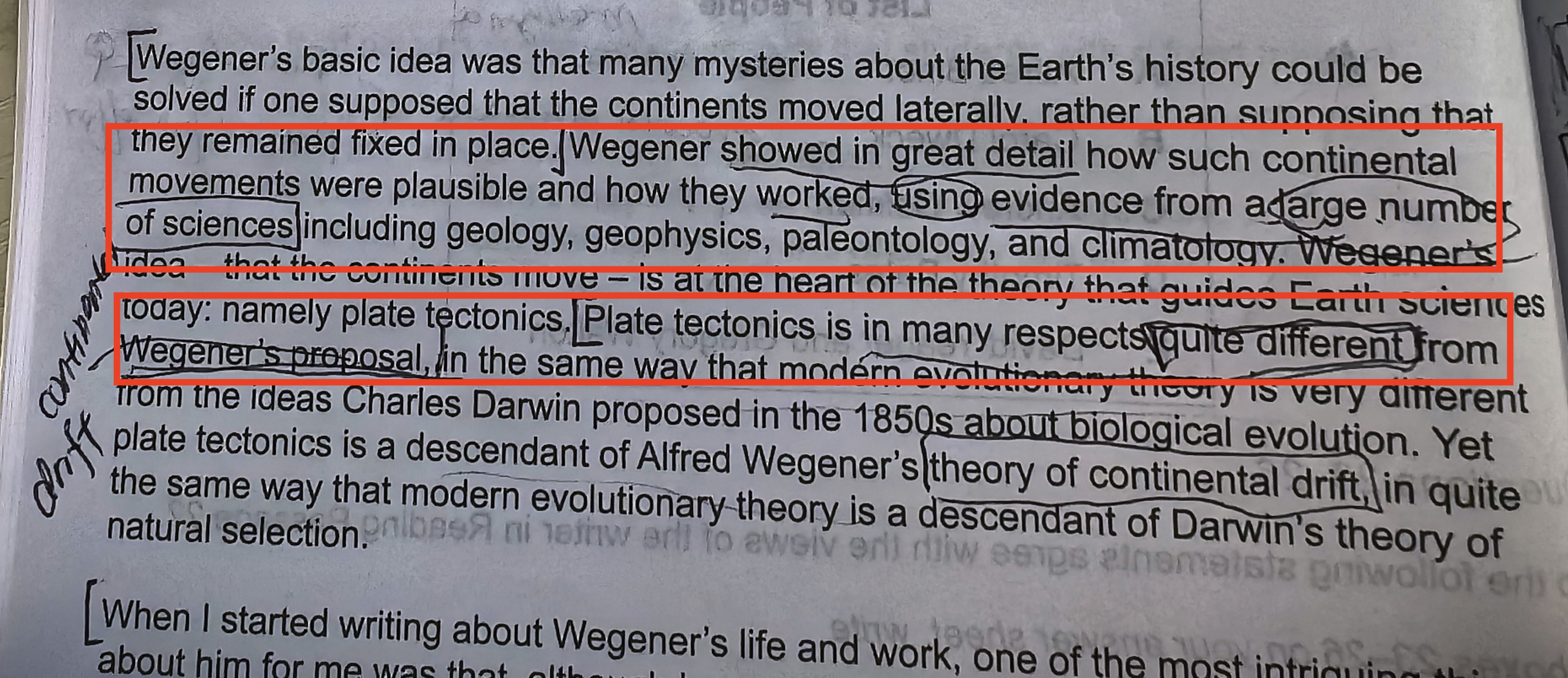
(Paragraph 3) – fill in the blanks
